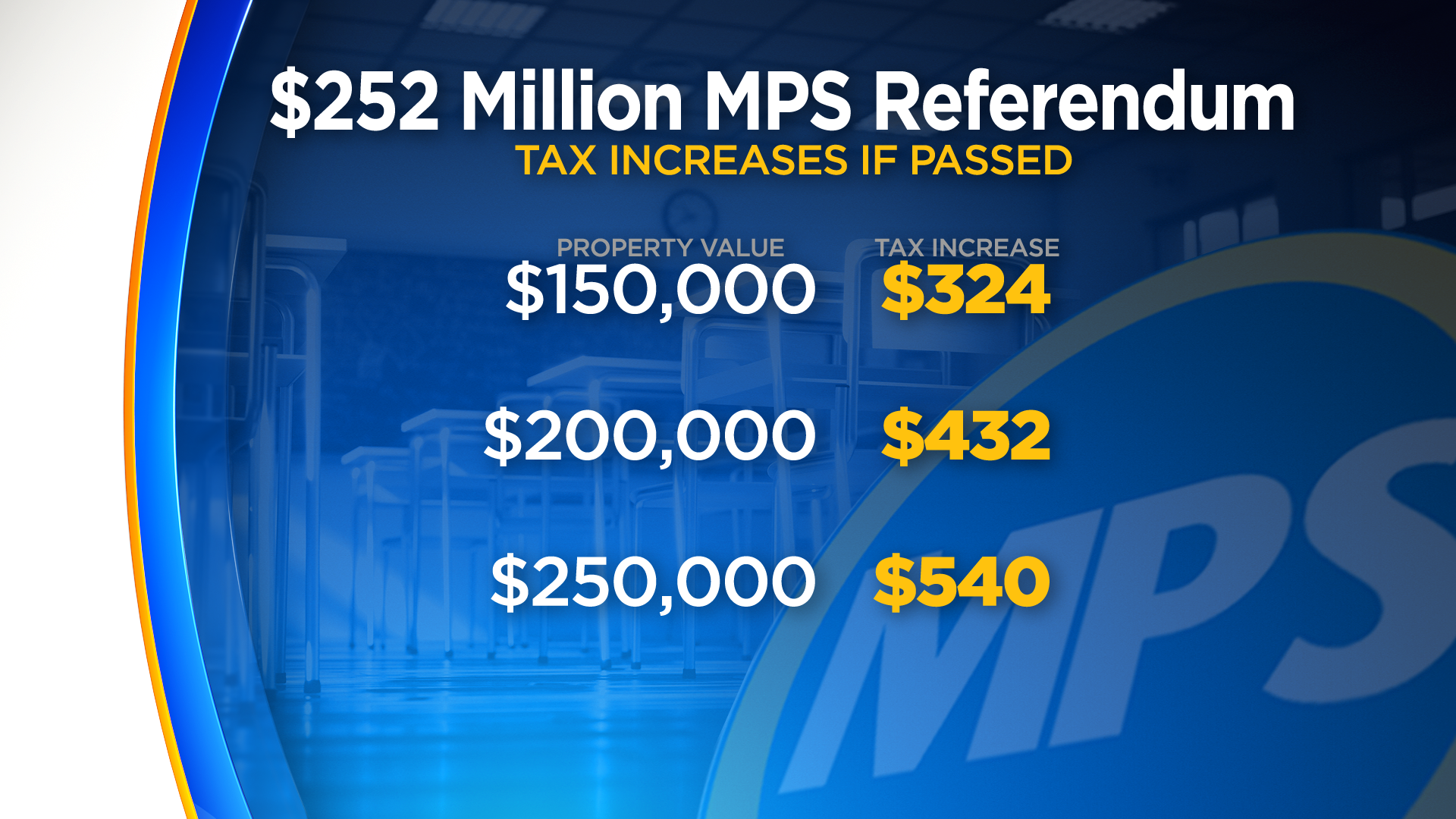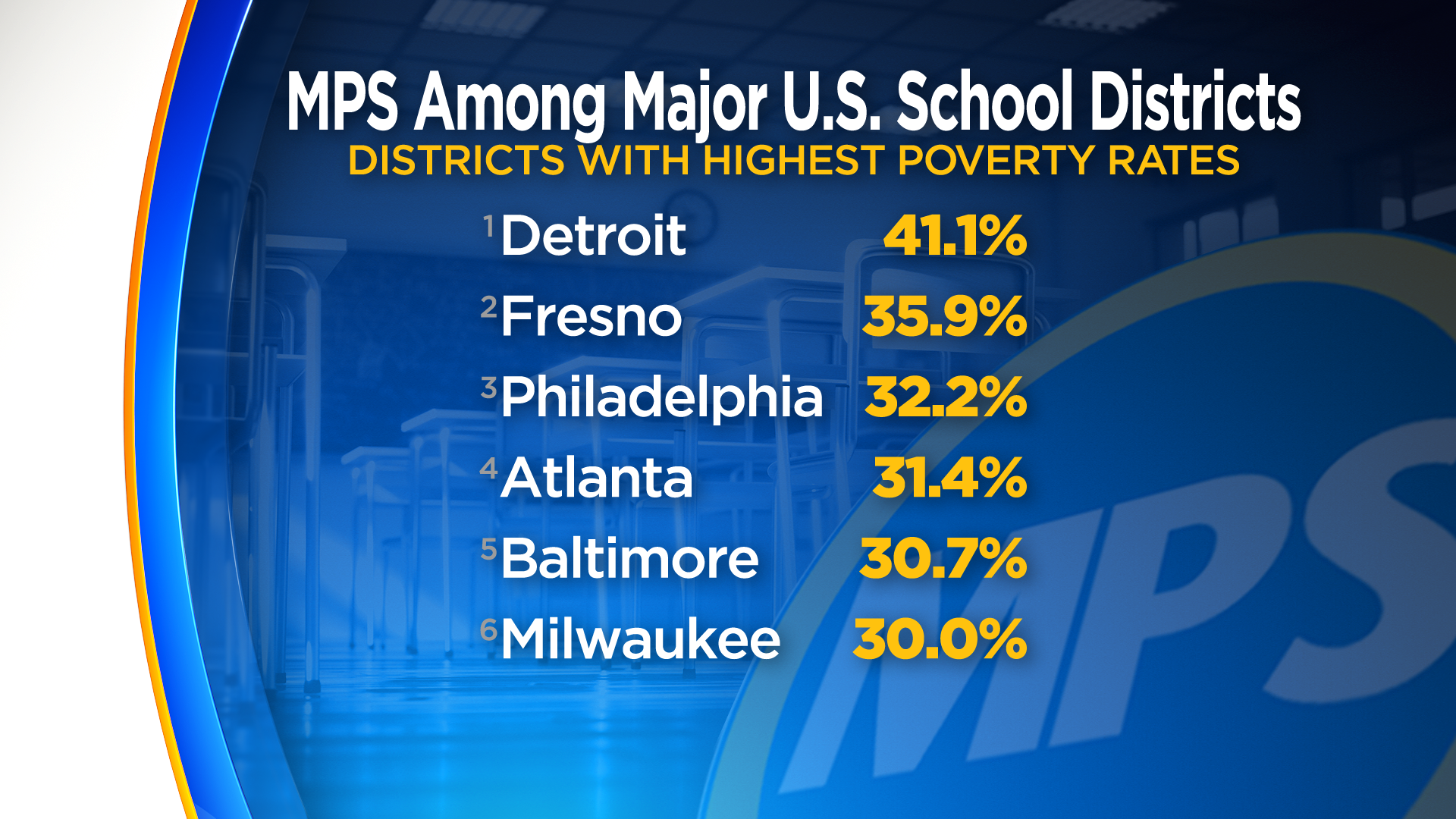Milwaukee Public Schools' $252 million referendum: What's the district's plan for that money?
MILWAUKEE (CBS 58) -- In less than six weeks, voters will decide whether Milwaukee Public Schools gets another $252 million through a property tax increase. In a one-on-one interview, CBS 58 asked MPS Superintendent Keith Posley how the district will use that money, and how those dollars will improve student performance in a district that currently lags behind many of its big-city peers.
Posley and other MPS officials have said the biggest culprit of the district's money problems is state aid that hasn't kept up with inflation. Milwaukee is one of 90 school districts across Wisconsin that are going to referendum this spring.
Milwaukee voters overwhelmingly passed a 2020 referendum that provided $87 million for MPS. Posley said this time around, the funding would allow the district to keep many of the additions the 2020 referendum funded, including expanded music classes at 90 schools, nearly 50 new library staff positions, and upgrades in early childhood classrooms at 62 schools.
"Maintaining what we have," Posley said. "We're trying to maintain."
Without additional funding, MPS officials have said the district will face a $200 million shortfall by 2025.
When asked if passing the referendum on April 2 would ensure the district doesn't come back in another four years seeking to raise property taxes, Posley pointed to the state Legislature.
"That is a decision the state will have to make around how schools are funded in the state of Wisconsin," Posley said.
If this referendum passes, property taxes would increase by $324 for a home valued at $150,000. For a home valued at $250,000, it would mean a $540 tax hike.
While state funding accounts for the lion's share of MPS' funding, it gets 15% of its funding from the federal government. Most big-city districts are less reliant on federal money, but Milwaukee gets more from Washington than most because of high poverty levels.
30% of MPS students come from families in poverty. Among the 100 biggest districts in the U.S., only five have a higher poverty rate.
District officials say the funding numbers aren't entirely accurate since about 30% of the district's federal Title I aid follows voucher students to private schools. That amounts to about 12% of the federal aid MPS receives leaving the district.
Because of the high poverty levels, Posley said that creates a need for more specialized programs in the classroom.
"Tutoring services, one-on-one type of support with young people. How do you manage and build those safety nets around young people for learning?" Posley said. "Those kinds of things takes dollars."
At Escuela Vieau in the Walker's Point neighborhood, the 2020 dollars allowed for kindergarten classrooms to be refurbished. That meant new desks and chairs, as well as replacing carpet with refinished hardwood floors. It also allowed the district to hire one more kindergarten teacher.
"It helps with achievement because having a lower student-to-teacher ratio allows teachers to spend more time with individual students," Marko Radmanovic, the school's principal, said.
Reversing below average results
Among big-city districts, Milwaukee test results are well below average. Using the National Assessment of Educational Progress, MPS 4th graders' reading and math scores were at least 20 points worse than the average large district's results.
For context, 10 points is about the equivalent of one year's worth of learning. The test result trends show MPS losing ground compared to other large districts. Reading scores were more than 20 points worse than the big-city average in 2022 and 2019. Before that, the gap was 18 points in 2017 and 14 points in 2013.
Poverty correlates strongly with the results, but not entirely. Milwaukee's results are comparable to Detroit and Baltimore, but Houston and Atlanta had scores much closer to the average large district score despite also having high poverty rates.
Posley maintained MPS was making progress, even if the NAEP results didn't show it.
"We have made things happen for children on a daily basis, and we are seeing success," he said. "And I will be the first to tell you that one test does not mean all."
"Look at classroom assessments, what's happening throughout the day."
As MPS asks taxpayers for $252 million in April, I asked Supt. Keith Posley about national testing data (NAEP) that show Milwaukee 4th graders have been scoring worse than the average big city district for more than a decade.
— A.J. Bayatpour (@AJBayatpour) February 23, 2024
"We have made things happen for children." pic.twitter.com/W2dZQtky1S
Colleston Morgan said he still had questions. Morgan, a Milwaukee native who was a district administrator in New Orleans, now directs the City Forward Collective, which positions itself as an advocate for all Milwaukee students, in both public and private schools.
"We haven't seen those numbers move at all, and that's because we haven't had a plan," Morgan said.
In July, MPS did launch a new districtwide strategic plan for 2023 through 2028. Some of its milestones are cut and dry, such as aiming to have all students performing at grade level by the end of their school year, starting in 2026-27. For others, it's not clear how the district plans to measure success; one goal is having students feel "emotionally and physically safe in school."
"We need to do better by all of our students here in Milwaukee. We think MPS is an important part of that equation," Morgan said. "But it's not clear how they're gonna use these additional resources to improve that academic picture."
















